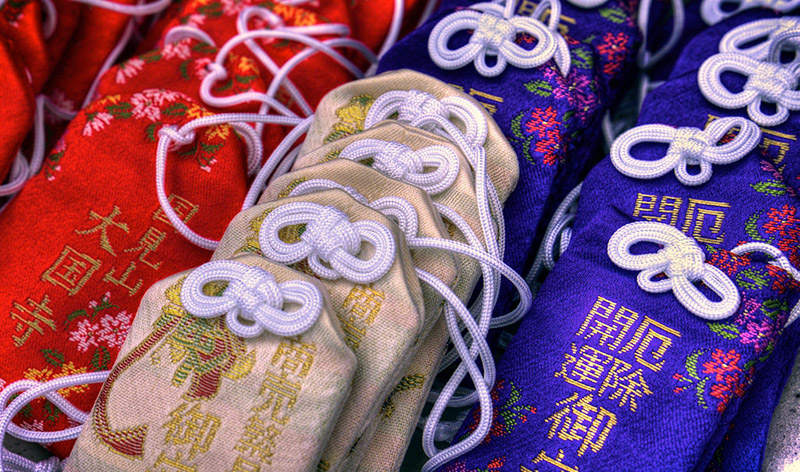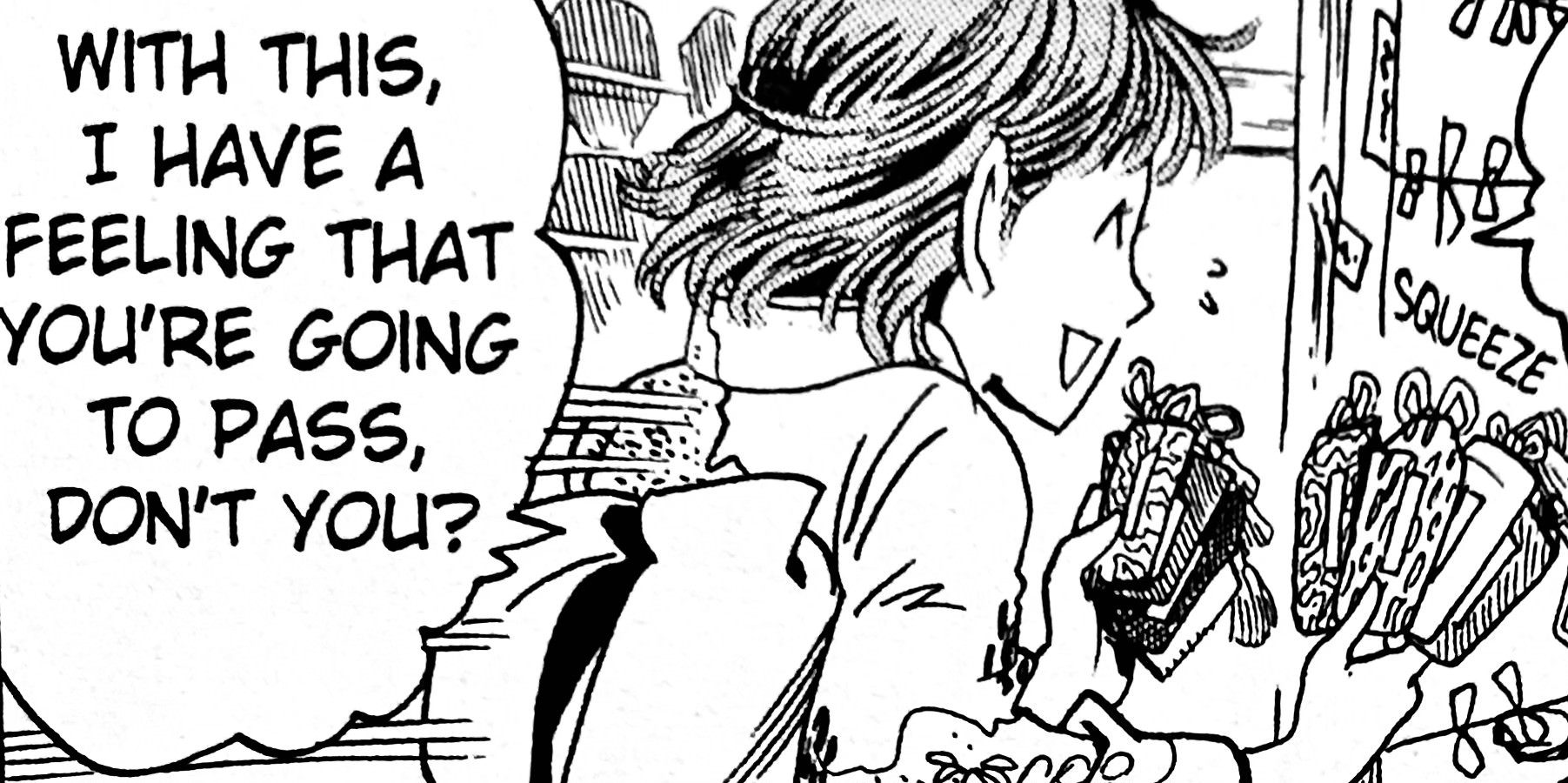 Omamori
Omamori 

Omamori (お守り、lit. “protection”) are blessed amulets sold at Japanese Shinto shrines and Buddhist temples, and are meant to bring good luck and protection to their owners. They may be carried on one’s person or tied to a bag.
Omamori are made from paper and wood, and contain small items or a prayer incantation inside a decorated, embroidered brocade bag. One must not open this bag, or else the omamori will lose its abilities. Omamori are designed and color-coded for a variety of everyday petitions, such as familial protection, traffic safety, good grades, financial prosperity, safe childbirth, finding love, and general good fortune. So they also make for a thoughtful well-wishing gift, especially for life-changing events.
Buying omamori from shrines or temples is a form of almsgiving, and money towards them is considered a donation. Traditionally, omamori only work for one year. It's customary for owners to return them the shrine or temple where they were bought, usually during Hatsumoude. This way they can be properly disposed of by clergy and replaced with newly bought omamori for the upcoming year.
 Relevance to Eyeshield 21
Relevance to Eyeshield 21 

Mamori Anezaki received her namesake from these exact amulets, as a reference to her overprotective personality. This was even joked about during the Las Vegas trip. Mamori kept rolling sevens and winning more and more money, so the casino gamblers praised her and began calling her “Lady Luck.”
Mamori is also shown to have bought handfuls of omamori for Sena during their Hatsumoude visit early that year, in hopes that they'll help him pass the Deimon High School extrance exam.



